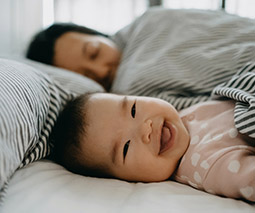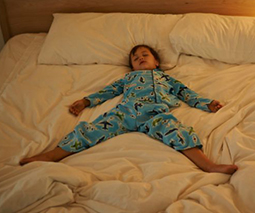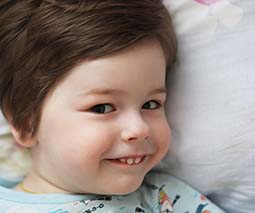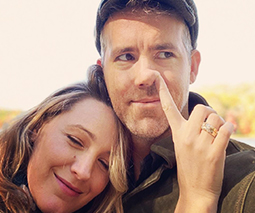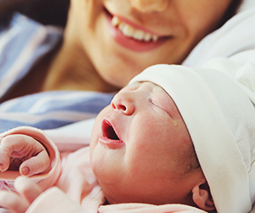4 times disrupted sleep isn’t developmentally normal (and what to do about it)
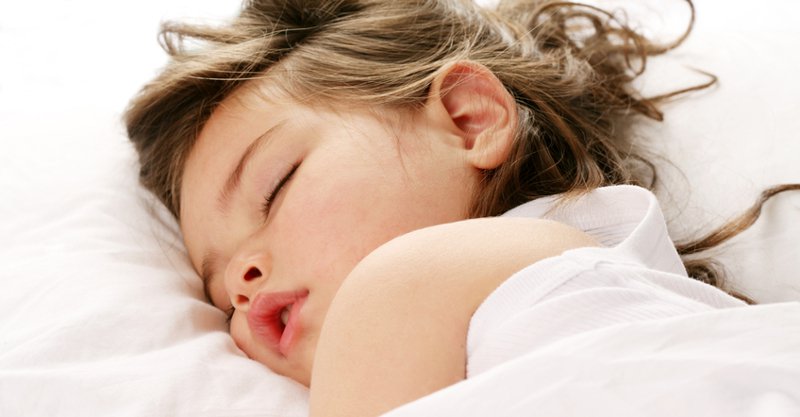
Disrupted sleep is a normal part of child development, right? Not necessarily. Here are four common sleep disorders parents should know about and when you should seek help, writes Shevonne Hunt.
Parenting and disrupted sleep go together like a night out dancing and sore legs the next day. Most adults accept that for the benefit of one, you will have to put up with the other.
But there are times when disrupted sleep isn’t a part of a child’s natural development.
There are several sleep disorders that are seen more commonly in childhood, and it’s good to know when to get help, and when to grin and bear it.
For more information on sleep disorders, check out Episode #5 of The Promise of Sleep, a new Kinderling podcast exploring all the ways children (and their adults) can get more sleep
1. Wake in fright: Night terrors
What do they look like?
Children will often scream loudly. They might move about. They look awake but they’re not aware of you. They can’t be calmed as you would calm them when they’re awake. This is because a night terror is a partial arousal from deep sleep.
Dr Arthur Teng is a paediatrician and sleep specialist at Sydney Children’s Sleep Disorders Clinic. He says they don’t always happen every day at the same time.
“It can come every day, it can come three times a week and nothing for three months and then it comes again.”
Fortunately, night terrors don’t normally have any adverse effects during the day. They do, however, have a significant impact on the rest of the family.
Why do they happen?
Night terrors typically occur around two to three years of age, though they can happen earlier or later. Most children will wake with a night terror in the first two hours of a sleep cycle.
There is not one definitive cause of night terrors. It could be an underlying sleep problem (like sleep apnoea), it might be triggered by sleep deprivation or fevers. Some have argued that it’s in response to watching screens too close to bedtime.
Can they be treated?
Dr Teng says the important thing with night terrors is to check there’s no underlying cause.
“It has been shown that if you snore, have sleep apnoea and night terrors, if you treat snoring and sleep apnoea then you will 100 percent cure night terrors.”
He has also cured night terrors by moving the bedtime back 15 minutes earlier. The advice is not to try and wake them, as that will only cause greater distress.
Finally, Dr Teng says we need to develop good sleep habits and avoid sleep deprivation.
With a child, that might mean having a set bath, book and bed routine, always going to sleep at the same time and turning the TV off an hour before bedtime.
Listen to Dr Teng on The Promise of Sleep:
2. Nightmares (not quite a disorder, but worth including)
What do they look like?
The main difference between a nightmare and a night terror is that you can rouse a child from a nightmare. They will know who you are and respond to your comfort.
They can, however, be as disrupting to your sleep as night terrors (if not as confronting).
Why do they happen?
It might be as obvious as an exceptionally scary episode of Teenage Mutant Ninja Turtles. Or something more subtle like a bad day at school. It can help to investigate to make sure there’s nothing happening that’s causing your child anxiety.
Can they be treated?
Apart from switching back to Shaun the Sheep and making sure nothing’s bothering your child, there is a way you can deal with recurring nightmares.
Dr Delwyn Bartlett, from the Woolcock Institute for Medical Research, says you can try imagery rehearsal therapy. This is where you talk to your child about the scariest part of the dream and what they would like to change. Then you write a different ending and repeat the new scenario at least three times before they go to sleep.
She says, “It is amazing what it can actually do in terms of brain processing at night.”
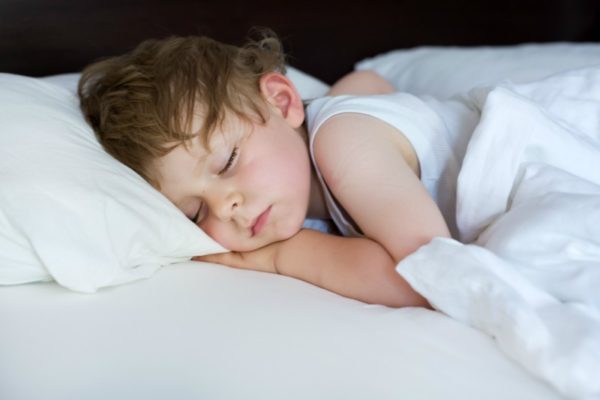
3. When snoring is not so cute: Sleep apnoea
Sleep apnoea is a when someone stops breathing (for a few to 90 seconds) during the night.
What does it look like?
The most common sign of sleep apnoea is when a child snores, though not all children who snore will have sleep apnoea. According to Dr Teng, only ten percent of children will snore, and only a third of that will have sleep apnoea.
Your child might have trouble breathing and eating at the same time. They may also toss and turn at night and be quite sweaty.
During the day, they may be very sleepy or hyperactive – Dr Teng says one-third of children get sleepy when they have sleep apnoea, and two-thirds are hyperactive. The peak time for sleep apnoea is between two and four years of age.
“We know that good sleep is very important for learning, memory consolidation, learning new things and memory recall. Often there are behavioural consequences to obstructive sleep apnoea.”
Why does it happen?
Sleep apnoea is caused by large tonsils and adenoids, restricting the back of your child’s throat (and therefore their breathing).
Can it be treated?
Most sleep apnoea in children is treated with a tonsillectomy or adenoidectomy. An Ear, Nose and Throat doctor might recommend this, or if your child is young you may decide to get a sleep study before going ahead with surgery. Dr Teng says a tonsillectomy is up to 90 percent successful for the treatment of sleep apnoea.
Read more about sleep:
- Is it possible to catch up on sleep?
- Is your child a sleepwalker? New research reveals some good news for parents
- The daycare sleep advice all parents need to know
4. Things that go bump in the night: Sleepwalking
What does it look like?
In some ways, sleepwalking is similar to night terrors in that children are only partially awake. They can look awake and be moving about the house, but they are unresponsive to you.
Lilli’s daughter was a sleepwalker, and she describes it like this: “She wouldn’t really respond to us. She wouldn’t answer directly and would be responsive to our touch but not so much to our words. We could turn her around and guide her back towards the bedroom. Sometimes she’s talking as she walks. I remember distinctly one time she thought she was chasing rabbits. She was calling out to the rabbits to pick them up when they were in danger.”
Sleepwalking doesn’t always have adverse effects during the day, but your child may be sleepy at school.
Why do they happen?
If your family has a history of sleepwalking, there’s a higher likelihood your child may be a sleepwalker too. It most commonly happens between the ages of four and eight years. Similar to night terrors, sleepwalking can be triggered by lack of sleep, fevers or illness.
Can they be treated?
As with other sleep disorders, it’s important to work out if there are any underlying problems exacerbating the sleepwalking. If there are other things happening, you should consult your GP.
Most children grow out of sleepwalking, so in the interim, it’s important to make sure they won’t hurt themselves if they get up in the night. Make sure doors are locked, keep them on the bottom floor of the house (or the bottom bunk bed) and make sure there aren’t any sharp corners where they may hurt themselves.
This post was originally published on Kinderling Kids Radio. Download the Kinderling app for more great stories.
